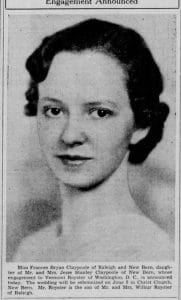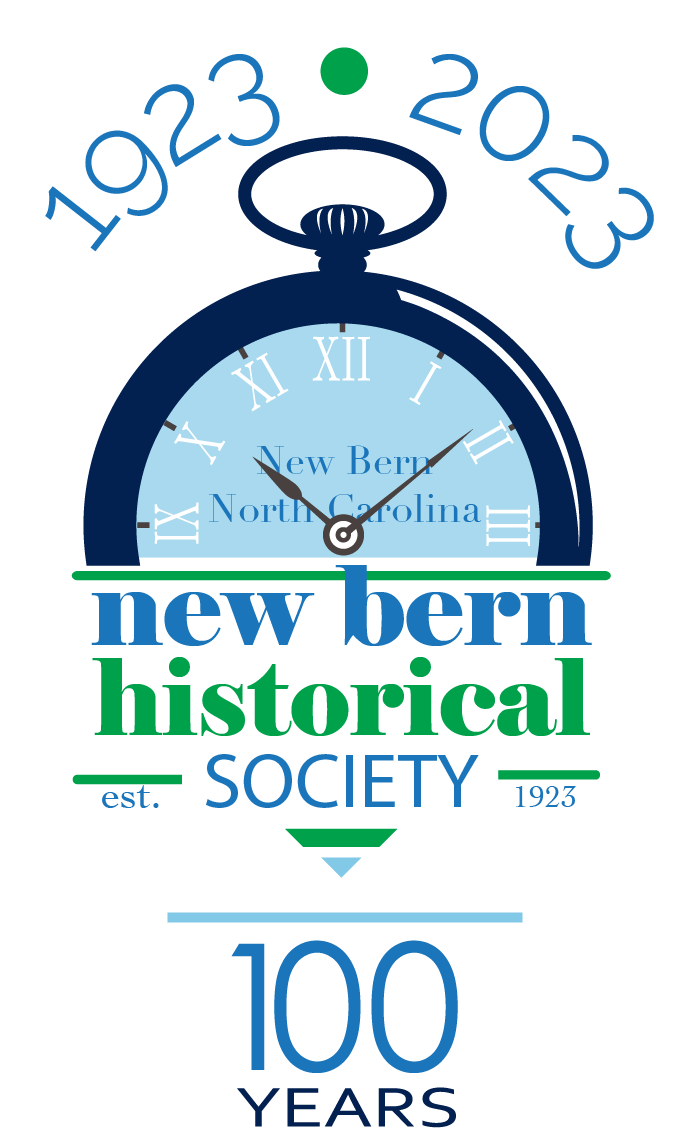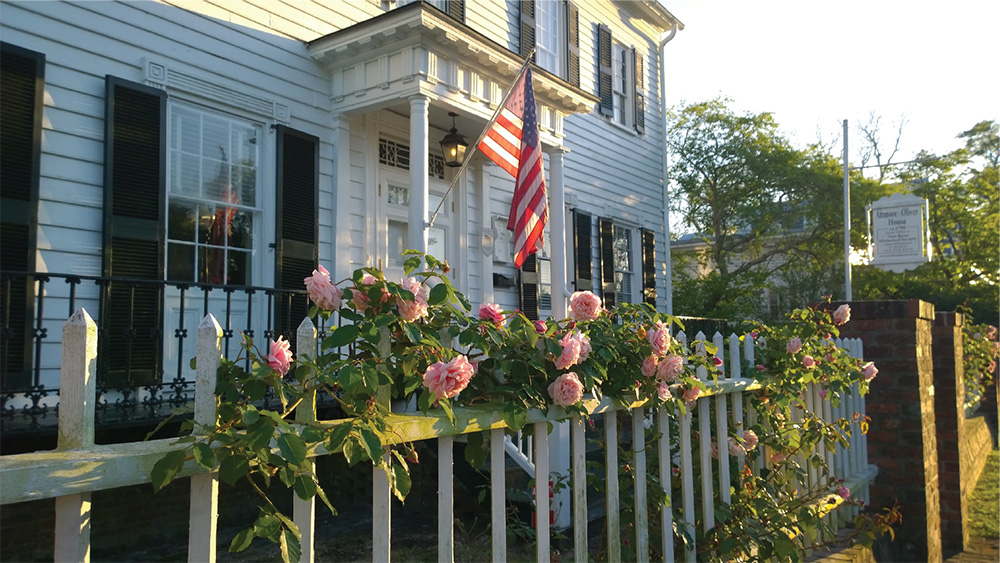A Pulitzer, a Love Story, and New Bern’s Link to the Wall Street Journal
NBHS Historian/Claudia Houston
New Bern has a knack for attracting fascinating people. Some are born here, some pass through, and others find themselves drawn back later in life. Two of those people lead us straight from East Front Street to the pages of The Wall Street Journal.
The connection begins with Frances Claypoole, daughter of Jesse and Frances Bryan Claypoole who lived at 411 East Front Street in a handsome 1925 home built for Jesse, a partner in Bishop and Claypoole Insurance and treasurer of E.K. Bishop & Company, a wholesale grocer. Frances’s mother came from the well-known Broadfoot family, so she was firmly rooted in New Bern’s social circles.
Meanwhile, a young man with an unforgettable name—Vermont Connecticut Royster—was growing up in Raleigh. His unusual name was the result of family tradition. His great grandfather decided that his children, male and female, would all be named after states. The Royster family thus included siblings named Vermont Connecticut, Iowa Michigan, Arkansas Delaware, Wisconsin Illinois, and Oregon, Minnesota. The girls’ names were Louisiana Maryland, Virginia the Carolinas, and Georgia Indiana.
 Vermont Connecticut Royster, meanwhile, grew up in Raleigh and attended the University of North Carolina at Chapel Hill, from which he graduated in 1935. He had a strong connection to UNC as his father, Wilbur Royster, was a professor of Greek and Latin at the University.
Vermont Connecticut Royster, meanwhile, grew up in Raleigh and attended the University of North Carolina at Chapel Hill, from which he graduated in 1935. He had a strong connection to UNC as his father, Wilbur Royster, was a professor of Greek and Latin at the University.
On a Fourth of July weekend in New Bern, fate intervened. Vermont came to New Bern to swim, party, and attend dances with friends, and in the midst of the celebrations, he met Frances Claypoole. Sparks flew, and though life soon carried Vermont back to Chapel Hill to finish his degree in classical languages, and to edit the campus newspaper, the couple kept their romance alive. Frances graduated from St. Mary’s College in Raleigh while Vermont prepared
for life beyond North Carolina.
After graduating in 1935, and with $50 in his pocket, Vermont moved to NYC, where he secured a job as a reporter for the New York City Bureau of The Wall Street Journal. Thus began a sixty-one-year career with them. Two years later, on June 5, 1937, he returned to New Bern to marry Frances at Christ Episcopal Church. Together, they began their life in New York City.
 Royster’s career was briefly interrupted by World War II. Joining the U.S. Navy Reserve in 1940, he commanded the destroyer USS Jack Miller, survived two typhoons, and in 1945 was among the first Americans to see the devastation at Nagasaki after the atomic bomb.
Royster’s career was briefly interrupted by World War II. Joining the U.S. Navy Reserve in 1940, he commanded the destroyer USS Jack Miller, survived two typhoons, and in 1945 was among the first Americans to see the devastation at Nagasaki after the atomic bomb.
After the war, he returned to The Wall Street Journal, rising through the ranks. His writings brought him two Pulitzer Prizes—one for Editorial Writing (1953) and one for Commentary (1984)—and the Presidential Medal of Freedom in 1986, awarded by President Ronald Reagan. Later, he returned to North Carolina to teach at UNC as Kenan Professor of Journalism and Public Affairs, inspiring generations of students.
Vermont and Frances finally retired to Raleigh, where their journey together ended with their passing—Vermont in 1996, Frances in 1998. They rest side by side at historic Oakwood Cemetery.
A man named for two states, a girl from East Front Street, and a Fourth of July dance—together, they gave New Bern a lasting connection to a great voice in American journalism.


